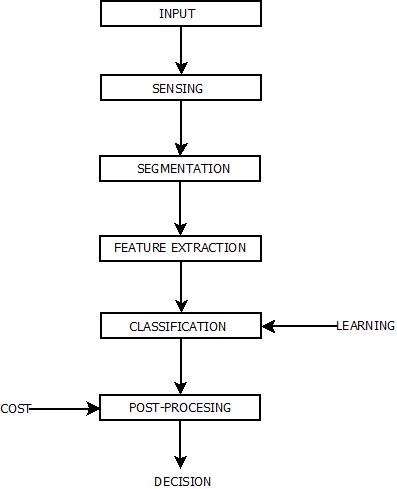Pattern Recognition : Introduction
- Pattern Recognition is the branch of machine learning a computer science which deals with the regularities and patterns in the data that can further be used to classify and categorize the data with the help of Pattern Recognition System.
“The assignment of a physical object or event to one of several pre-specified categories”
Pattern Recognition System
- This system comprises of mainly five components namely sensing, segmentation, feature extraction, classification and post processing. All of these together generates a system and works as follows:

Pattern Recognition System
- Sensing and Data Acquisition: It includes, various properties that describes the object, such as its entities and attributes which are captured using sensing device.
- Segmentation: Data objects are segmented into smaller segments in this step.
- Feature Extraction: In this step, certain features of data objects such as weight, colors, dimension etc. are extracted.
- Classification: Based on the extracted features, data objects are classified.
- Post Processing & Decision: Certain refinements and adjustments are done as per the changes in features of the data objects which are in the process of recognition. Thus, decision making can be done once, post processing is completed.
Pattern Recognition System : The Need
- Pattern Recognition System is responsible for generating patterns and similarities among given problem/data space, that can further be used to generate solutions to complex problems effectively and efficiently.
- Certain problems that can be solved by humans, can also be made to be solved by machine by using this process.
Applications Of Pattern Recognition
- Character Recognition.
- Weather Prediction.
- Sonar Detection.
- Image Processing.
- Medical Diagnosis.
- Speech Recognition.
- Information Management Systems.